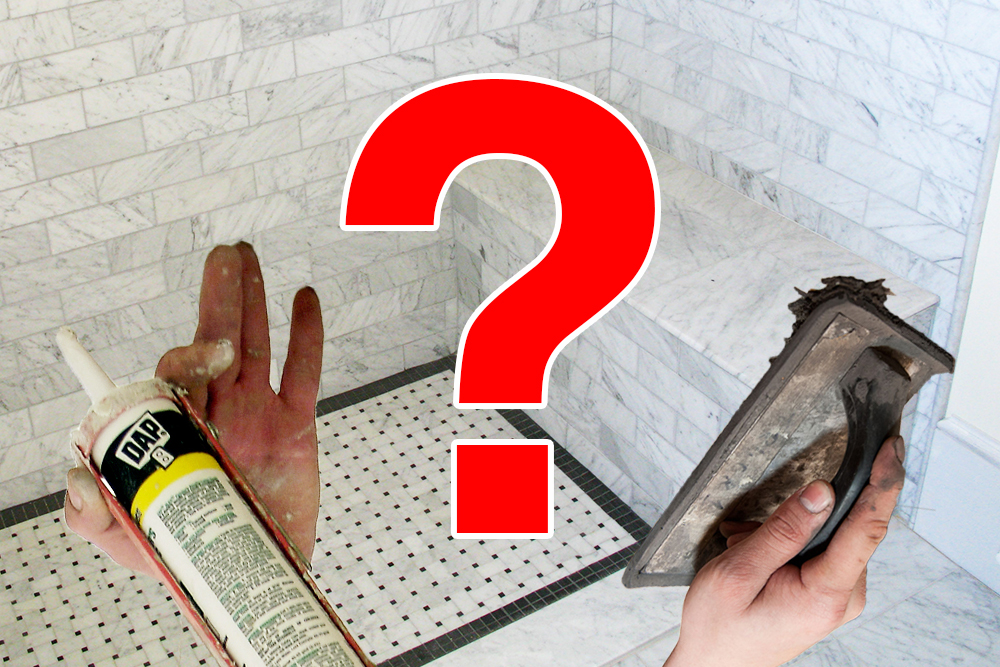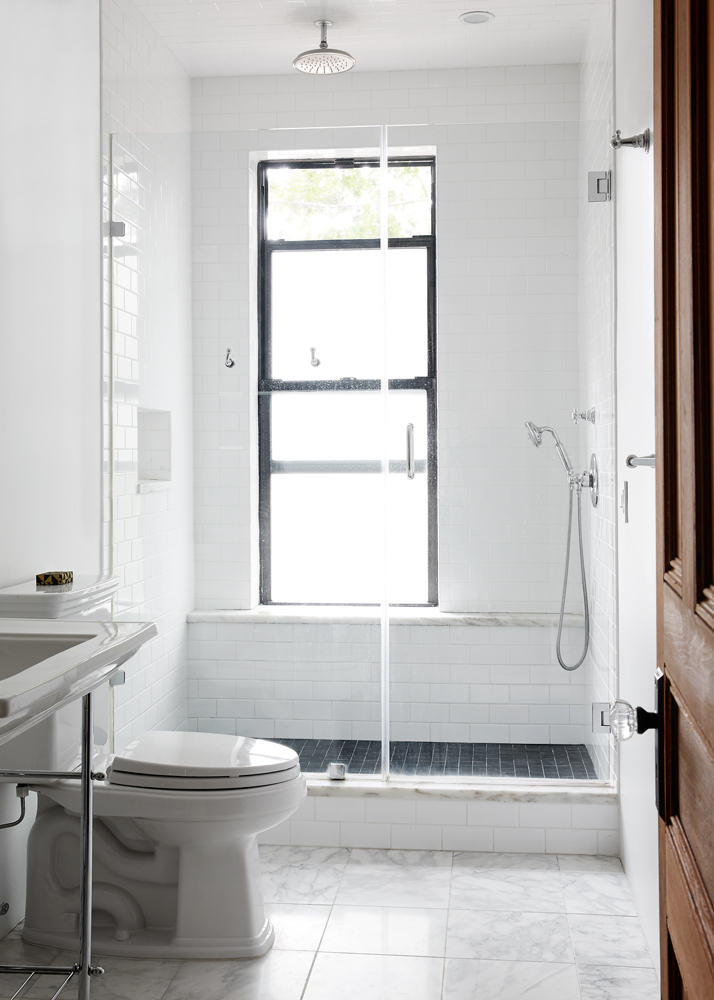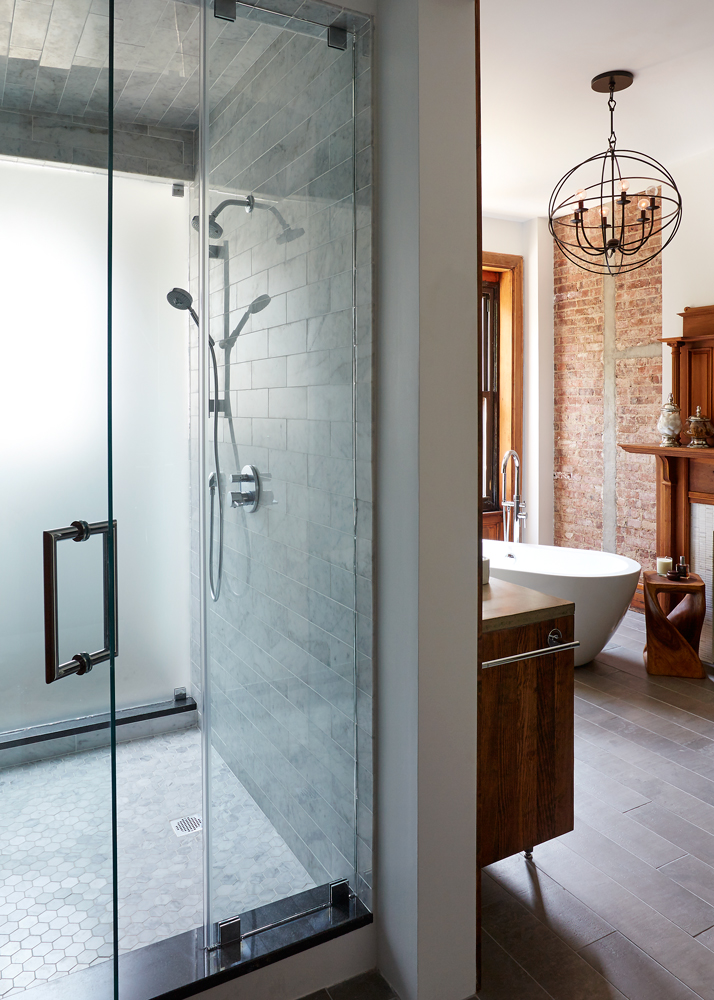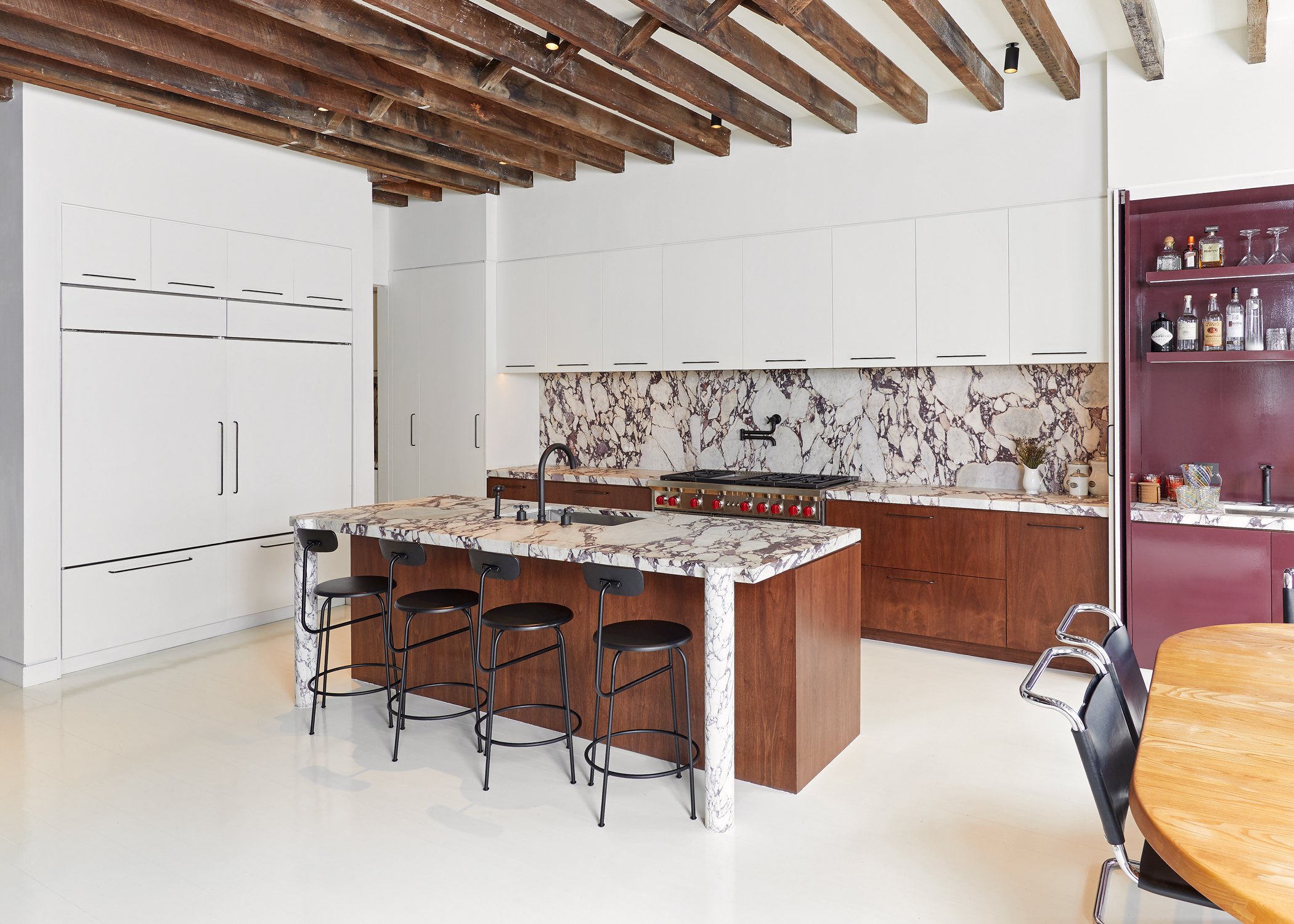Ask Brownstoner: Grout or Caulk?
Reader CHM writes in the forum: “The caulk/grout between our bathtub and wall tiles has turned black with mold. I want to regrout and think we should just use grout with a sealer. But, I’ve heard it’s better to use caulk. We currently have a layer of caulk over the grout… We don’t have time…

Reader CHM writes in the forum:
“The caulk/grout between our bathtub and wall tiles has turned black with mold. I want to regrout and think we should just use grout with a sealer. But, I’ve heard it’s better to use caulk. We currently have a layer of caulk over the grout… We don’t have time to dry that area after each shower.”
What’s the difference between grout and caulk, anyway? And how do you properly install tile so that the water doesn’t get where it shouldn’t be? And what’s with the mold?
Brownstoner has the answers.

Photo from Kennedy Construction Services
What is the difference between grout and caulk?
Grout is basically cement mixed with sand and water. When it’s mixed and applied correctly, it binds tiles together and creates a watertight seal so that moisture doesn’t get between or under them. But grout really only works when it’s between tile and tile.
Caulk is a sealant — typically made of silicone or acrylic material. Where grout is just good for bonding together tile, caulk is good for creating a seal between multiple materials — say, between glass tiles and a porcelain tub. Or where the edge of a tile meets the wall. Caulk is impermeable, meaning it won’t let in water. For bathroom or kitchen uses, silicone caulk is usually best.

Photo via Kennedy Construction Services
How do you properly install tile to make it waterproof?
Joe Kennedy of Kennedy Construction Services told Brownstoner that there’s a lot to consider when waterproofing a new bathroom.
“Proper methodology is crucial for waterproofing bathrooms, especially the shower and tub enclosures. You’ll want to use materials made specifically for wet environments, including a membrane or lead pan, cement board, and waterproofing products such as Laticrete’s Hydroban.”
That’s right. Waterproofing a shower needs to start before you even put in the tile. If it’s just a standalone shower without a tub, you (or your builder) should install a shower pan liner — a sheet of very thick plastic that goes between the subfloor and the mortar, extending about 6 inches up the walls of the shower.
Waterproof drywall or cement board should be used for the walls (it’ll cover where the pan liner goes up the walls) and cover the seams and corners with fiberglass membrane tape — adhered with a waterproofing adhesive.
Once all of that is done, you can start tiling. Secure your tiles to the shower wall using a mortar made for bathroom use. Once your tiles are placed and the mortar has dried, mix the grout according to specifications. It should have an oatmeal-like consistency. When applying the grout, work it into the spaces between tiles. After it’s dried a little, wipe off the excess and let it dry.
Now it’s time to get caulking. Apply silicone caulk along any tile edge that meets another material — between tile and tub, tile and wall, tile and shower door frame, etc. Give it time to set.
Then take a celebratory shower, secure in the knowledge that water isn’t getting anywhere it shouldn’t be.
But stay vigilant. Kennedy warned us: “In Brownstones and older buildings especially, seams may open up and caulking or tile grout may need to be reapplied. Address any problems you notice ASAP.”
But how can I keep grout from getting moldy?
Just ventilating your bathroom can help prevent mold. Crack open a window, or leave the fan running for 15 to 20 minutes after you’re out of the shower. If you’re really Type A about tile mold, get a squeegee to remove water from the tile before you step out. Regularly cleaning your shower with baking soda can also help to prevent mold.
But once you see the first signs of mold, you need to get ruthless. Mix a few teaspoons of vinegar into a cup of water and spray it on the burgeoning mold colony. Let it work its magic for 15 minutes, rise or scrub off the mold, and dry.
If your mold situation gets out of hand, consider replacing your grout altogether.
If you’ve got a question about your home, post it to the forum.
If you’re looking for a contractor, check out Brownstoner’s Local Home Pros.
Special thanks to our tile-instal expert Joe Kennedy of Kennedy Construction Services.
Image at top is a composite with images from Wikipedia and Brock Builders via Flickr
Businesses Mentioned in the Post












Nancy, you probably have a vent that continually draws air, which is what the code calls for. If you hold a piece of TP up to it, you should see suction. Not saying it does anything, but that’s what the code requires so that’s all anyone installs.
someone correct me if i am wrong, but your (@nancy324) bathroom doesn’t sound like it’s legal. Can you get the landlord to provide some sort of exhaust. I’m guessing it would have to be the exhaust fan.
Thanks very much for this article, although reading it makes me pretty unhappy. We’re starting to renovate our bathroom now and I was wondering if there might be a way to get mold and mildew out of our shower forever. We live in an apartment, and the bathroom has no window or fan. Our shower tile is unsightly and our housekeeper doesn’t even attempt to deal with it anymore. Considering how old our bathroom is, I was hoping there might be new materials available today that would never go moldy on us. The one thing our designer did recommend was large tiles to limit the amount of grout. But when I asked if we could eliminate grout completely she said tiles need grout. Thanks for the confirmation.